#Americas First Corps
Text
Wtf kinda resident evil spaces are y'all in that it's common to see someone "lament" Leon losing his job as a c*p. Maybe leave those places asap.
#Literally I've only ever seen one post ab it and it was just them saying smthn like “in another au Leon had a perfect first day”#Supposed to be sad ab his trauma or whatever#But even still most everyone in the comments was like no lol. Acab.#Like idk I feel like if you're seeing an overwhelming support for p*lice in an online environment you should leave it. Immediately.#Cater your tags better. Block people. Etc.#Also like. Not to state the obvious but y'all will whinge when people don't understand Leon's incessant need to help ppl no matter what#But when I say that Leon is still in the BOW workforce because he - subconsciously or not - does in fact choose to be#Y'all get mad.#Do you understand even if the govt never had a hold on him he would've eventually joined the DSO or at least some kinda BOW fighting Corp??#Do you understand he refuses to quit of his own volition bc BOWs still exist and still terrorise innocent people#And his stupid captain america complex won't let him leave so long as there's even one more person left to save#His compassion being his biggest strength AND weakness is literally such an awesome thing but y'all ignore it#Bc you wanna pretend Leon is serving against his will :'((( he's a poow wittol baby who can't escape :'(((#Get a brain.
8 notes
·
View notes
Text
youtube
#youtube#militarytraining#2024#strategy#America's First Corps#war games#challenge#military#army#Ultimate Squad Showdown#team#battle#training#combat#tactical#competition#defense#soldiers#troops#armed forces#military exercise#mission.#War#USA#America#Epic#Challenge#Elite#Military#Victory
1 note
·
View note
Note
Hi! What are your favourite moments of Dick with the Justice League Team or members? Or maybe with Clark or Diana?
Hey!
My favorite Clark and Dick moment of all time! -
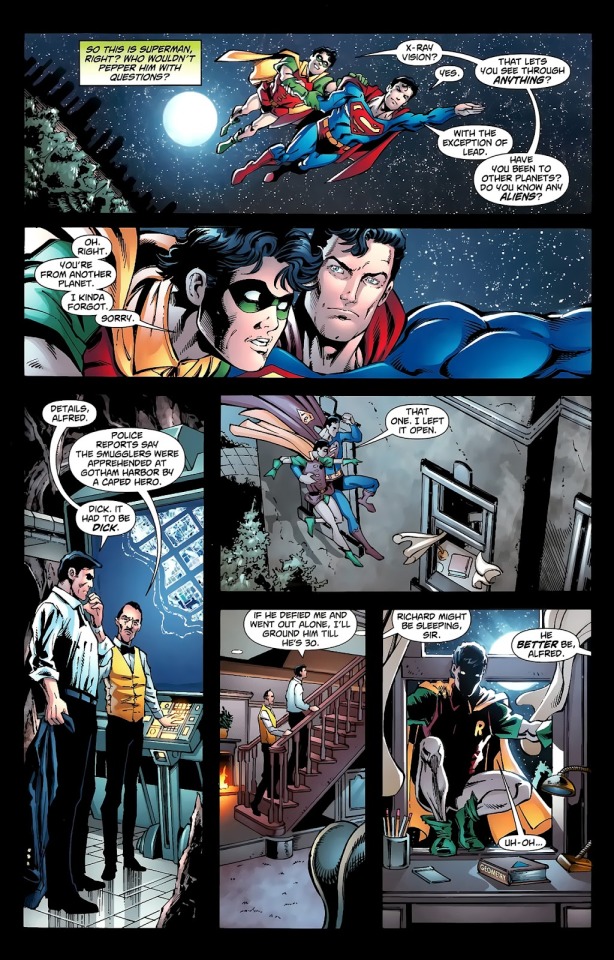
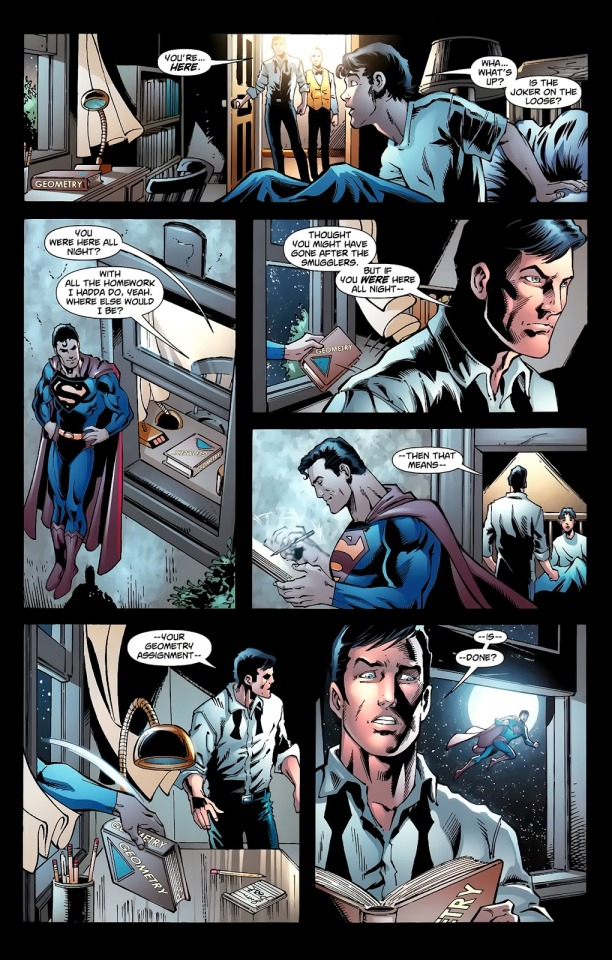

Superman (1939) Issue #700
Clark will always be there for his favorite person! Not to mention that Dick ran immediately to Clark after being fired by Bruce for spending too much time with the Titans and Clark was just outraged on Dick's behalf. "He can't do that! You're his right hand man!" Clark adores Dick so, so much. He puts him on a pedestal without being toxic about it the same way Bruce does.
Dick doesn't have as significant moments with Diana as he does with Clark, Ollie, or anyone else but whenever they are together, it's just Diana always being impressed by Dick's talents.

Titans (2016) Annual #1
Actually I lied, I do have a favorite. It's this one.

Justice League (2018) Issue #53
SHE GAVE HIM A THEMYSCIRAIAN HORSE! TO DICK, A MAN, SHE TRUSTED AND RESPECTED HIM SO MUCH SHE GAVE HIM A GIFT FROM THE LAND OF WOMAN AND GODS!! CAN ANYONE POSSIBLY RECIEVE A HIGHER HONOR FROM HER THAN WHAT HE'S BEEN GIVEN?!
Favorite overall moments are the Justice League teasing Dick or trusting him unconditionally!

Brave and Bold (2007) Issue #15
They love him and love playing with him.

Brave and Bold (2007) Issue #15
This is also my favorite JL moment lol. To them Dick is like their kid/nephew/baby brother that they're super duper proud of.
When something happens in the Batfam and Batman's out of his mind he's the first person they go to.
What I really like is that Dick is so well-connected to the League that you get personal interactions with him and all the members at some point.
Hal for example prefers him abundantly to Bruce

Justice League of America (2006) Issue #142
"Different. New Faces. And a batman I actually don't mind being around."
Kara's not exactly Justice League but I felt like including her anyway cause I love this moment
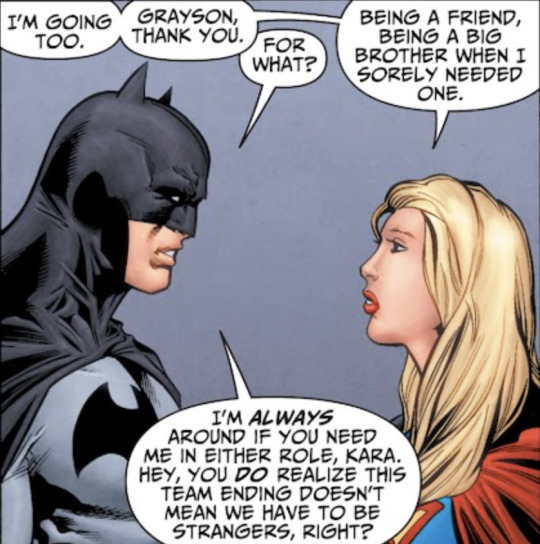

Justice League of America (2006) Issue #60
People (JL version) helping Dick will always be my favorite moments though
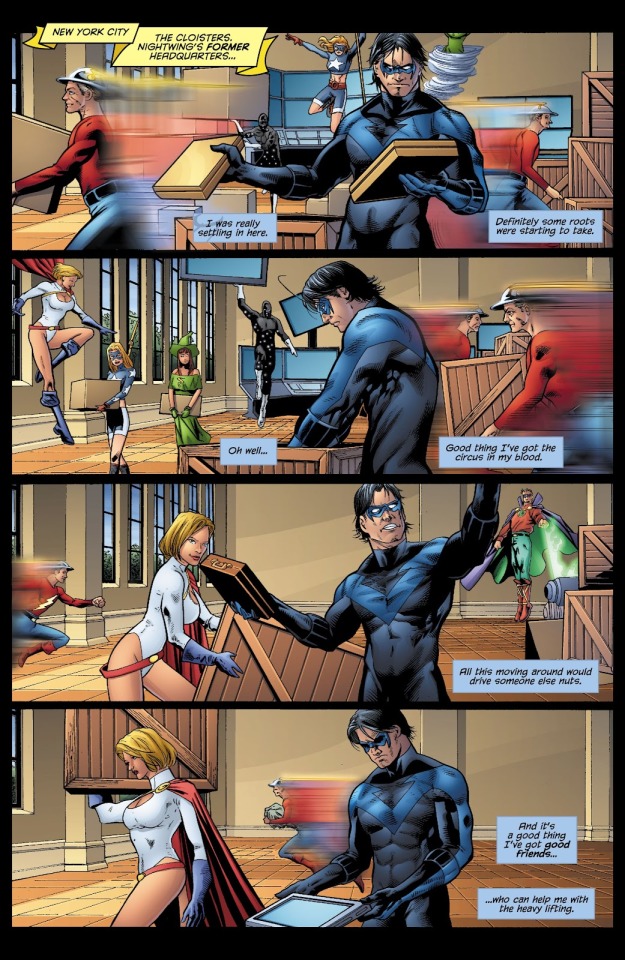

Nightwing (1996) Issue #53
Here you have Jay Garrick (first Flash), Stargirl, Alan Scott (first Green Lantern), Powergirl, and more.
Him commanding the Justice League-
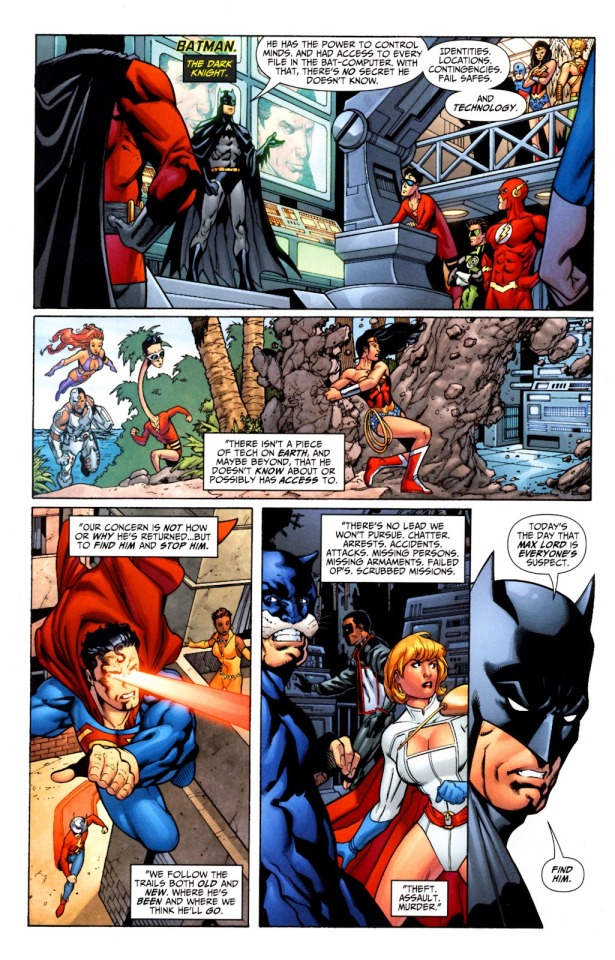
Justice League: Generation Lost #1
Dick leading hero teams, the Justice League in this case, of course must be included. I don't think people understand how integral Dick is to the hero community just because he's not on the Justice League. One of the DC writers said Dick Grayson is the most important character that's not in the Justice League. He has a personal connection to every. Single. Person. In. DC.
The Outsiders, the Justice League, the Doom Patrol, the Teen Titans, the Titans, the JSA, the Justice League International, the Green Lantern Corps, the magic community (John Contastine, Zatanna, Jason Blood), even freaking Marvel and the X-Men!
He is, canonically, at the center of the freaking universe.

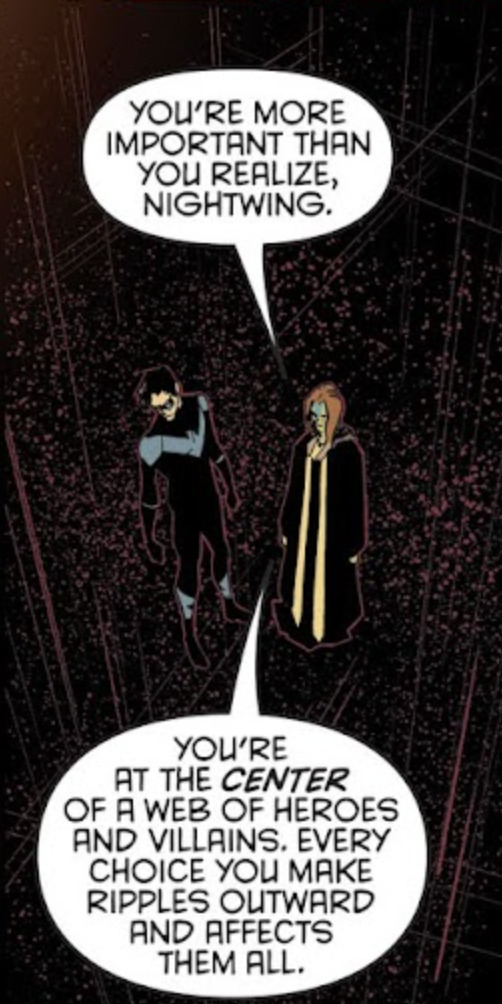
Nightwing (2016) Issue #49
Cause you know why?

Outsiders (2003) Issue #37
#dick grayson#nightwing#clark kent#superman#diana prince#wonder woman#oliver queen#green arrow#hawkman#boston brand#deadman#kara kent#supergirl#power girl#alan scott#green lantern#jay garrick#the flash#grace#owen mercer#captain boomerang#justice league#thanks for the ask!#cl anon asks
529 notes
·
View notes
Text
This is a really exciting development! We've already seen the positive effects of beavers returning to their historic range here in North America, so it's even better to see the same thing underway across the Atlantic. A single pair with their first litter of kits certainly isn't a large-scale reintroduction, but it's proof that these animals have the capacity to get back to work here.
Beavers are often called ecosystem engineers, and for good reason. These keystone species alter waterways by building dams and lodges, creating ponds and other aquatic habitats for species that can't handle faster-moving water. These also often serve as water reservoirs during summer droughts. The dams and lodges themselves may also provide nesting sites for birds and shelter for other animals, plants, and fungi.
Sadly there are still people who want to see beavers trapped and hunted as pests because their dams can sometimes flood fields, to include those that were historically seasonal wetlands. Until we stop seeing animals' value only in terms of whether they're useful to us or not, the beavers are going to face opposition as they reclaim their old territories on both continents.
Nonetheless, I give a hearty cheer to the Mammalian Corps of Engineers!
#beavers#beaver#mammals#rodent#wildlife#animals#ecosystems#ecology#restoration ecology#nature#environment#conservation#science#scicomm#hopepunk#endangered species#extinction#biodiversity#wild animals#good news
992 notes
·
View notes
Text
i have this spydad headcannon that like Scout is trans but Spy didn't realize this and thought he had a daughter in America, but when he checked back the daughter was nowhere to be seen and all records were gone so he thought she died and was heartbroken. But then later he got news that his lovers son was gonna be at mann corp so as a favor to her, he went to watch over him. things are going fine but he's pretty bitter about the daughter he'd never gotten the chance to know. He sadly thinks that if he could turn back time he never would have left her. But then at some point scout is caught with pads and the truth comes out and Spy is at a loss for words. He just keeps asking, "but were you born a girl??" But Scout thinks he's being transphobic and gets super duper upset and runs off but Spy has never been this happy in his whole life. He sheds tears for the first time in years and now he promises to be the father his child, his *son* deserves
161 notes
·
View notes
Text
In the early hours of April 7th the Israel Defence Forces’ (idf) 98th Division withdrew from Khan Younis, the second-largest city in Gaza, exactly six months after Hamas’s attack of October 7th. Israel had the sympathy and broad support of much of the West when it sent its army to war with Hamas. Half a year later, much of Gaza lies in ruins. Over 33,000 Palestinians have been killed, according to the Gazan health ministry. The uprooted civilian population faces famine. Israel has lost the battle for global public opinion. Even its closest allies, including America, are considering whether to limit arms shipments.
Much of the criticism centres on Israel’s armed forces. Even after its devastating failure to prevent the massacres of October 7th, the idf has remained the most cherished institution in Israeli society. Holding fast to the vision of the idf as both effective and moral is essential to Israelis’ image of themselves. But it is now accused of two catastrophic failures. First, that it has not achieved its military objectives in Gaza. Second, that it has acted immorally and broken the laws of war. The implications for both the idf and Israel are profound.
Major-General Noam Tibon is a retired corps commander who on October 7th rushed to his son’s kibbutz near Gaza, single-handedly extricating his young family while Hamas was on the rampage. In hindsight, he says, the idf should have gone into Rafah first. He believes his former colleagues were “under the illusion that going first into Gaza City would break Hamas psychologically, by taking their symbols of government”. But, he argues, “all the talk of dismantling their brigades and battalions is rubbish. They remain a fundamentalist movement which doesn’t need commanders to fight until death.”
The lack of enforcement of even these looser rules of engagement has been such that accusations that Israel has broken the laws of war are plausible. “The standing orders don’t matter in the field,” says one veteran reserve officer who has mostly been in Gaza since October. “Just about any battalion commander can decide that whoever moves in his sector is a terrorist or that buildings should be destroyed because they could have been used by Hamas.” “The only limit to the number of buildings we blew up was the time we had inside Gaza,” says one sapper in a combat-engineering battalion. “If you find a Kalashnikov or even Hamas literature in an apartment, it’s enough to incriminate the building.”
Other officers reported a breakdown of discipline in their units, with multiple cases of looting. “I think everyone in our platoon took a coffee set,” said one sergeant. Soldiers have filmed themselves vandalising Palestinian property and, in some cases, put those videos online. On February 20th the idf’s chief of staff published a public letter to all soldiers warning them to use force only where necessary, “to distinguish between a terrorist and who is not, not to take anything which isn’t ours—a souvenir or weaponry—and not to film vengeance videos.” Four months into the war, this was too little, too late. “He should have acted much sooner to root this out,” says one battalion commander.
The idf’s third failure is its role in Israel’s obstruction—until an angry phone call between President Joe Biden and Mr Netanyahu on April 4th—of aid efforts to Gazans. Officers have mainly blamed the politicians for this. But some acknowledge that even without a political directive, the army, which is arguably an occupying force in Gaza now, should have assumed this responsibility from the planning stage. Instead it acted only when the humanitarian situation became critical.
That does not bode well for the future. The war in Gaza is not over. Israel’s next step is unclear. Mr Netanyahu says that a date has been set for an incursion into Rafah, Hamas’s last major stronghold (in private, Israeli generals deny this).
#yemen#jerusalem#tel aviv#current events#palestine#free palestine#gaza#free gaza#news on gaza#palestine news#news update#war news#war on gaza#palestinian resistance#fuck the idf
191 notes
·
View notes
Text
"When the first contingents of U.S. troops were being sent to Saudi Arabia, in August of 1990, Corporal Jeff Paterson, a twenty-two-year-old Marine stationed in Hawaii, sat down on the runway of the airfield and refused to board a plane bound for Saudi Arabia. He asked to be discharged from the Marine Corps:
'I have come to believe that there are no justified wars. . . . I began to question exactly what I was doing in the Marine Corps about the time I began to read about history. I began to read up on America's support for the murderous regimes of Guatemala, Iran under the Shah, and El Salvador. . . . I object to the use of military force against any people, anywhere, any time.'
Fourteen Marine Corps reservists at Camp Lejeune, North Carolina, filed for conscientious objector status, despite the prospect of a court-martial for desertion. A lance corporal in the Marines, Erik Larsen, issued a statement:
'I declare myself a conscientious objector. Here is my sea bag full of personal gear. Here is my gas mask. I no longer need them. I am no longer a Marine. . . . It, to me, is embarrassing to fight for a way of life in which basic human needs, like a place to sleep, one hot meal a day and some medical attention, cannot even be met in our nation's capital.'
. . . When President Bush attacked Iraq in 1991, claiming that he was acting to end the Iraqi occupation of Kuwait, a group of Native Americans in Oregon distributed a biting and ironic 'open letter':
'Dear President Bush. Please send your assistance in freeing our small nation from occupation. This foreign force occupied our lands to steal our rich resources. They used biological warfare and deceit, killing thousands of elders, children and women in the process. As they overwhelmed our land, they deposed our leaders and people of our own government, and in its place, they installed their own government systems that yet today control our daily lives in many ways. As in your own words, the occupation and overthrow of one small nation . . . is one too many. Sincerely, An American Indian.'"
-Howard Zinn, A People's History of the United States
1K notes
·
View notes
Text

Carroll Shelby - SCCA ( Sports Car Club of America ) National Champion 1956
Advertising Castrol Oil used in his race car.
Carroll Shelby – Carroll was born in 1923 in East Texas; his health issues first became evident at 7 years old. He graduated from high school in 1940 and was going to study aeronautical engineering at Georgia School of Technology. He never got there. The war came and he enlisted in the Army Air Corps and became a sergeant flight instructor and test pilot.
In 1952 his first automotive competition was in a 1931 Ford Model A flathead on a dragstrip. He advanced in 52 to a Cadillac Allard and probably won 9 of 9 races. In 1954 Donald Healey sent him to Bonneville with a Healey 1000S and they set numerous world records in speed. He went to Le Mans in an Aston Martin. In 1956 and 1957 he was on the cover of Sports Illustrated as “Driver of the Year”. It was 1956 when he won his first SCCA Championship and 1957 he won 19 consecutive SCCA races. In 58 and 59, he ran Formula 1 and he won Le Mans. In 1960 he ran his last race. That began the era of big horsepower with inspired engineering. He had an aura about him that made him bigger than life.
Shelby’s story showed us that you can go all the way to the top.
61 notes
·
View notes
Text

THURSDAY HERO: Rabbi Herschel Schacter
Rabbi Herschel Schacter was a young U.S. Army chaplain who helped traumatized Holocaust survivors rebuild their lives, and later became an influential leader in the Orthodox movement and a strong advocate for Soviet Jewry.
Herschel Schacter was born in Brooklyn in 1917, the son of immigrants from Poland and the youngest of ten siblings. His family was religious, and he was educated at the finest yeshivas before obtaining smicha (rabbinic ordination) in 1941. Rabbi Schacter served as a pulpit rabbi for a year before enlisting in the Army after Pearl Harbor. After attending Army Chaplain school at Harvard, he was sent to Europe with the VIII Corps and fought in the Battle of the Bulge.
Rabbi Schacter was one of the liberators of the Buchenwald concentration camp. He stayed in Germany for two and a half months after the war, tending to the broken spirits of survivors, most of whom had lost their entire families. Many were the only survivor from their entire town; everyone they ever knew had been murdered. A famous photograph shows him leading Shavuot services at Buchenwald (above). This photo occupies an entire wall at Israeli Holocaust Memorial Yad Vashem.
What Rabbi Schacter saw at Buchenwald was hell on earth. The inmates who were still alive – barely -were emaciated, lying on filthy planks and covered in lice, hollow-eyed ghosts blinking in the sunlight and without the energy to even lift their heads. The stench of rotting flesh and feces was overwhelming.
Rabbi Schacter noticed Yisrael Meir Lau, 7 years old, hiding behind a pile of corpses. Known as Lulek, the child had lost most of his family and had been on his own since age 5. Rabbi Schacter cared for the boy and helped him immigrate to Israel, where he would one day become Chief Rabbi.
Rabbi Schacter’s son Jacob, a prominent Orthodox rabbi and professor at Yeshiva University, wrote in a piece for Tablet Magazine, “My father spent the rest of his life describing what he saw in Buchenwald and what he did during his 10 weeks there. His work focused on a number of different areas: he tended to the psychological needs of survivors; he worked hard to reunite families; he founded a kibbutz outside Weimar for young survivors preparing to make aliyah [move to Israel]; and he organized a transport of children to Switzerland.”
Another story that illustrates Rabbi Schacter’s massive impact concerns Yoav Kimmelman, a 16 year old from a Hasidic home who lost every single member of his large extended family, around 60 people. The Holocaust destroyed Yoav’s faith and identity as a Jew. According to Rabbi Jacob Schacter, Yoav was “done with God, done with Jewish life, done with Jewish destiny, done with the Jewish people.” Rabbi Herschel Schacter reached out – literally – and singlehandedly brought Yoav back to Jewish life. It happened when Rabbi Schacter was taking 200 child survivors to Switzerland. He wanted young Yoav to go with him, but the boy had no interest in being around fellow Jews and he refused to go. Rabbi Schacter asked him to come to the train station to say goodbye and while there, the rabbi reached down and physically dragged Yoav onto the train. The teen was angry and sullen, but the rabbi convinced him to join a minyan and read Torah in the DP camp. Long story short, Yoav Kimmelman remained religious and at his death, he left 80 descendants, all of them Torah Jews. “That’s all because my father had the guts to pull him onto that train when it left the station,” said Rabbi Jacob Schacter.
Rabbi Herschel Schacter became a prominent leader of Orthodox Judaism in America, helping to rebuild from the ashes and grow the movement. He was elected president of the Conference of Presidents of Major Jewish Organizations in 1968. Dr. Rafael Medoff, in his book “The Rabbi of Buchenwald,” wrote: “He was the first Orthodox rabbi to reach that level of leadership. Until then others saw Orthodox leaders as fit to be heads of Orthodox groups, but not larger ones. Rabbi Schacter broke that mold. He was sufficiently savvy and sophisticated to represent the entire [Jewish] community, not just the Orthodox minority.”
At the very beginning of the movement to free Soviet Jewry, in 1956, Rabbi Schacter was part of the first rabbinical delegation to visit the USSR since 1917. He then went to Hungary to help Jewish refugees flee during the Hungarian revolution.
Rabbi Schacter served as a pulpit rabbi in the Bronx for more than 60 years and was known as a brilliant and inspiring orator, beloved by his congregation. He passed away in 2013 at age 95 and was survived by his beloved wife Pnina, two children, four grandchildren, and eight great-grandchildren. Pnina Schacter died in 2018.
For healing the broken spirits of Holocaust survivors and helping them rebuild their lives, and for his devotion to the Jewish people and his decades of leadership, we honor Rabbi Herschel Schacter as this week’s Thursday Hero.
59 notes
·
View notes
Text
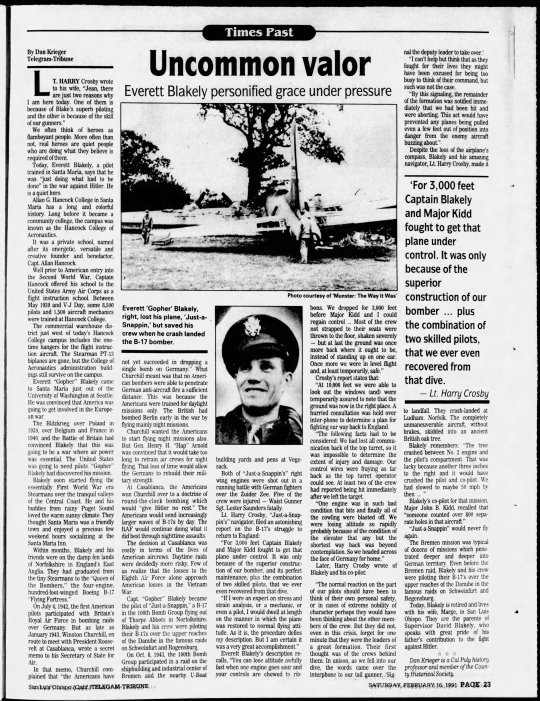
A really great article about what the crew of the Just-a-Snappin' went through on the Bremen raid on October 8, 1943.
Transcript below Read More
Article found through this page on the 100th Bomb Group site
Article named: Uncommon valor
Subheading: Everett Blakely personified grace under pressure
By Dan Krieger Telegram-Tribune
Photos of the Just-a-Snappin' crashed into a tree, and one of Blakely smiling in uniform. The latter with the message "Everett 'Gopher' Blakely, right, lost his plne, 'Just-a-Snappin.' but saved his crew when he crash landed the B-17 bomber.
Pull quote in the article: 'For 3,000 feet Captain Blakely and Major Kidd fought to get that plane under control. It was only because of the superior construction of our bomber... plus the combination of two skilled pilots, that we ever even recovered from that dive. -Lt. Harry Crosby
Main article: Lt. Harry Crosby wrote to his wife, "Jean there are just two reasons why I am here today. One of them is because of Blake's superb piloting and the other is because of the skill of our gunners."
We often think of heroes as flamboyant people. More often than not, real heroes are quiet people who are doing what they believe is required of them.
Today Everett Blakely, a pilot trained in Santa Maria, says that he was "just doing what had to be done" in the war against Hitler. He was a quiet hero.
Allan G. Hancock College in Santa Maria has a long and colorful history. Long before it became a community college, the campus was known as the Hancock College of Aeronautics.
It was a private school, named after its energetic, versatile and creative founder and benefactor, Capt. Allan Hancock.
Well prior to American entry into the Second World War, Captain Hancock offered his school to the United States Army Air Corps as a flight instruction school. Between May 1939 and V-J Day, some 8,500 pilots and 1,500 aircraft mechanics were trained at Hancock College.
The commercial warehouse district just west of today's Hancock College campus includes the one-time hangers for the flight instruction aircraft. The Stearman PT-13 biplanes are gone, but the College of Aeronautics administration buildings still survive on campus.
Everett "Gopher" Blakely came to Santa Maria just out of the University of Washington at Seattle. He was convinced that America was going to get involved in the European war.
The Blitzkrieg over Poland in 1939, over Belgium and France in 1940, and the Battle of Britain had convinced Blakely that this was going to be a war where air power was essential. The United States was going to need pilots. "Gopher" Blakely had discovered his mission.
Blakely soon started flying the essentially First World War era Stearmans over the tranquil valleys of the Central Coast. He and his buddies from rainy Puget Sound loved the warm sunny climate. They thought Santa Maria was a friendly town and enjoyed a precious few weekend hours socializing at the Santa Maria Inn.
Within months, Blakely and his friends were on the damp fen lands of Norfolkshire in England's East Anglia. They had graduated from the tiny Stearmans to the "Queen of the Bombers," the four-engine, hundred-foot-winged Boeing B-17 "Flying Fortress."
On July 4, 1943, the first American pilots participated with Britain's Royal Air Force in bombing raids over Germany. But as late as January 1943, Winston Churchill, en route to meet with President Roosevelt at Casablanca, wrote a secret memo to his Secretary of State for Air.
In that memo, Churchill complained that "the Americans have not yet succeeded in dropping a single bomb on Germany." What Churchill meant was that no American bombers were able to penetrate German anti-aircraft fire a sufficient distance. This was because the Americans were trained for daylight missions only. The British had bomber Berlin early in the war by flying mainly night missions,
Churchill wanted the Americans to start flying night missions also. But Gen. Henry H. "Hap" Arnold was convinced that it would take too long to retrain air crews for night flying. That loss of time would allow the Germans to rebuild their military strength.
At Casablanca, the Americans won Churchill over to a doctrine of round-the-clock bombing which would "give Hitler no rest." The Americans would send increasingly larger waves of B-17s by day. The RAF would continue doing what it did best through nighttime assaults.
The decision at Casablanca was costly in terms of the lives of American aircrews. Daytime raids were decidedly more risky. Few of us realize that the losses to the Eight Air Force alone approach American losses in the Vietnam War.
Capt. "Gopher" Blakely became the pilot of "Just-a-Snappin," a B-17 in the 100th Bomb Group flying out of Thorpe Abbots in Norfolkshire. Blakelly and his crew were piloting their B-17s over the upper reaches of the Danube in the famous raids on Schweinfurt and Rogensburg.
On Oct. 8, 1943, the 10th Bomb Group participated in a raid on the shipbuilding and industrial center of Bremen and the nearby U-Boat building yards and pens at Vegesack.
Both of "Just-a-Snappin's" right wing engines were shot out in a running battle with German fighters over the Zuider Zee. Five of the crew were injured - Waist Giner Sgt. Lester Saunders fatally.
Lt. Harry Crosby, "Just-a-Snappin's" navigator, filed an astonishing report on the B-17's struggle to return to England:
"For 3,000 feet Captain Blakely and Major Kidd fought to get that plane under control. It was only because of the superior construction of our bomber, and its perfect maintenance, plus the combination of two skilled pilots, that we even recovered from that dive.
"If I were an expert on stress and strain analysis, or a mechanic, or even a pilot, I would dwell at length on the manner in which the plane was restored to normal flying attitude. As it is, the procedure defies my description. But I am certain it was a very great accomplishment."
Everett Blakely's description recalls, "You can lose altitude awfully fast when one engine goes sour and your controls are chewed to ribbons. We dropped for 3,000 feet before Major Kidd and I could regain control... Most of the crew were not strapped to their seats were thrown to the floor, shaken severely - but at last the ground was once more back where it ought to be, instead of standing up on one ear. Once more we were in level flight and, at least temporarily, safe."
Crosby's report states that:
"At 10,000 feet we were able to look out the windows (and) were temporarily assured to not that the ground was now in the right place. A hurried consultation was held over inter-phone to determine a plan for fighting our way back to England.
"The following facts had to be considered: We had lost all communication back of the top turret, so it was impossible to determine the extent of injury and damage. Our control wires were fraying as far back as the top turret operator could see. At least two of the crew had reported being hit immediately after we left the target.
"One engine was in such bad condition that bits and finally all of the cowling were blasted off. We were losing altitude so rapidly probably because of the condition of the elevator that any but the shortest way back was beyond contemplation. So we headed across the face of Germany for home."
Later, Harry Crosby wrote of Blakely and his co-pilot:
"The normal reaction on the part of our pilots should have been to think of their own personal safety, or in cases of extreme nobility of character perhaps they would have been thinking about the other members of the crew. But they did not, even in this crisis, forget for one minute they were the leaders of a great formation. Their first thought was of the crews behind them. In unison, as we fell into our dive, the words came over the interphone to our tail gunner, 'Signal the deputy leader to take over.'
"I can't help but to think as they fought for their lives they might have been excused for being too busy to think of their command, but such was not the case.
"By this signaling, the remainder of the formation was notified immediately that we had been hit and were aborting. This act would have prevented any planes being pulled even a few feet out of position into danger from the enemy aircraft buzzing about."
Despite the loss of the airplane's compass, Blakely and his amazing navigator, Lt. Harry Crosby, made it to landfall. They crash-landed at Ludham, Norfolk. The completely unmaneuverable aircraft, without any brakes, skidded into an ancient British oak tree.
Blakely remembers: "The tree crashed between Np. 2 engine and the pilot's compartment. That was lucky because another three inches to the right and it would have crushed the pilot and co-pilot. We had slowed to maybe 50 mph by then..."
Blakely's co-pilot for that mission, Major John B. Kidd, recalled that "someone counted over 800 separate holes in that aircraft."
"Just-a-Snappin" would never fly again.
The Bremen mission was typical of dozens of missions which penetrated deeper and deeper into German territory. Even before the Bremen raid, Blakely and his crew were piloting their B-17's over teh upper reaches of the Danube in the famous raids on Schweinfurt and Regensburg.
Today, Blakely is retired and lives with his wife, Marge, in San Luis Obispo. They are the parents of Supervisor David Blakely, who speaks with great pride of his father's contribution to the fight against Hitler.
-three stars end the article and separate a note about the author
Dan Krieger is a Cal Poly history professor and member of the County Historical Society.
-Along the bottom of the page the article is attributed to the San Luis Obispo (Calif.) Telegram-Tribune in the Saturday, February 16, 1991 edition on page 23.
#masters of the air#mota#real guys#everett blakely#just-a-snappin'#goblin fort appreciation society#jack kidd#harry crosby#dana rambles#Bremen mission#October 8 1943
54 notes
·
View notes
Text

I present to you my years long obsession - female America.
This is not a Nyotalia version it's just a concept of "what if everything is the same but Alfred was born a girl". Like i see so much potential! In a world where all the odds are stacked against her, she despite it all gets to where she is today. Making good and bad decisions along the way.
A lil hc/backstory for my main girl:
• Given name (by dad Arthur) is Elizabeth Felicity Kirkland but during the revolution changes her last name to Jones. Her first name change happens in the 1820/1830s when she changes it to Alexandra, also dropping her second name. (I was young when I came across the name and it means "defender/protector of man" and I was /obessed/ so i just stick to it since she is a loser and just thinks it's a cool sounding name)
• She goes by Alex/Al and I think that's neat :)
• My girl is tall. Like 181 cm tall. Sender but with visible muscles. She does want a bigger behind but her Anglo-Saxon genetics say nah.
• As a child she spent more time in England due to her being a girl so I think even if Arthur was absent he didn't allow her to spend much time alone in the colonies. She resents that ofc
• Just like with Alfred, Alex is very fkn close to Matt even if she forgets to call him or check up on him for months at a time. Al: "Hey man I know I just called a while ago but how've you been? Matt: "you called me 5 months ago..."
• Works at NASA as a part time aeronaitical engeneer. Loves physics, hates chemistry (self projection im sorry)
• During the revolution she dressed up as a boy but the people she worked with knew she wasn't one. People went along with it anyway.
• Other than during the American revolution, she dressed in feminine presenting clothes up until the 1930s. After that it was trousers all the way!
• Alex was never a nurse during wartime but definitely did accountaint work in ww1 and later joined the Women’s Auxiliary Air Force (WAAF) where she stayed until 1943 when she joined her men fighting on the ground ( Conversion to Army status, Women's Army Corps - WAC). That's when she saw actual combat.
• Isn't fond of birds. Canaries are fine. Eagles are unsettling.
• Obsesses over a certan thing/hobby at a time up to a point where she perfects her skill. When she was about 14 (human years) it was the whole freedom and equality of man and all the politics regarding it. In the 1890s her obession was cars and motor vehicles. The 1910s brought a new obsession on womens rights. 1960s was space exploration where she devoted almost all her time researching and working for NASA, disregarding her goverment/state duties as a country. In the 1980s it was the internet. In 1990s she got really interested in the Balkan wars (self insert >:)) for whatever reason. Today her attention is mostly on social media and her attention span ia short af. Still really likes all things tech.
• Hasn't got many properties/real estate. Al does own a penthouse in Seaport, Boston and a late 17th and early 18th century colonial home in Newbury, Boston (that she needs to renovate asap). The only other real state she owns is in California, though modern and recently buit, it's not big nor does she spend much time there.
• Her personality is basicaly Alfred if he grew up as a woman and had to face opression based on sex and inequality that came with it. So still bubbly, extroverted, a social butterfly but also self-serving, idealistic, manipulative sprinkled in with sarcasm, cautiousness and craftiness. Same feckin sense of humour tho.
• In 1783, at the Treaty of Paris in Versailles both her and her father had to sign the document that started her independence (She herself had a human representitive 'cus of her age/sex bla bla but it was mostly formalities). At that signing Arthur gave her a flintlock pistol that he himself used in the 1640s. Not many words were exchanged, he just put it in her hand to keep. She still has it in her attic. Somewhere. She'd find it if she just takes the time to look for it I'm sure.
• In 1889 she straight up did her first war crime/murder of a fellow nation (if you don't count shooting her pops face off at Saratoga in 1777). After an altrication with Antonio that resulted in him insulting and slapping the girl for her audacity and mouthiness, she punched him straight in the jaw. A fight insued where she got ahold of his belt and straight up strangled him. Took her a while to process that and accept it. On the bright side Antonios scilence was heard around the world and while perplexed and insulted, older and influential (mostly male at that point) nations started to feel a glint of respect forming for the young startup.
• Al was given a family pocket watch by her father in the 90s (No more empire for Arthur so he sad :(((((( ) that was suppoaed to go to a firstborn son of a lord as an inheritance symbol. Everyone thought Jack would get it since Matt is techincally not Arthur's son. But even he would be expected to recieve it before Al. Then in an unexpected turn of events, while visiting her grumpy and nostalgeous empire-missing dad, Arthur pulled out the watch while eating stale kebabs in front of the telly and gave it to her casualy without as much as a word (The empire started with her, it shall end with her). She keeps it in her work desk drawer in a wooden box.
• Al and Zee have an interesting relationship. While being different in almost every aspect, there ia a mutual respect for eachother from eachother. While not really being able to see eye to eye, they are sisters in a certain roundabout and very fucked up way. Girls who learned that they are very much judged by their sex despite being daughters of a high ranking British lord. While aware that she will never be Alex/Elizabeth in her fathers eyes, Zee still gets treated as a treasure by her father. Much to Zee's annoyance.
• It's still Matt who's in Alex's shadow. Despite the dificulties she rises above and is the perfect child of an empire. Smart, intelligent, inquisitive, a fast learner and incredibly aware of the political and historical situation at all times. Even despite being a girl and less than a son in the eyes of a 17th/18th century society, she suceeds.
• Arthur wanted a son to come from his colonial endeavours, as all empires/nobility at the time did. And as all other empires at the time had. But ofc karma is a bitch and he's the only empire with an only child being a daughter. Though at first thougrly dissaponted, when he lays his eyes on his daughter for the first time, the only emotion he can feel is /joy/.
• Instead of sowing/knitting Al's education was very much focused on natural sciences, since that is where Arthur quickly realized she exels at. He swapped her Violin and General History of Music lessions with Astrophysics and The History of Astronomy. All in an attempt to stop her from making his ears bleed from the constant prattling about The Four Square Theorem or The Brachistocrone Curve. It only got worse, but his daughter was happy and content.
I have sooooo many more of these jfc i might do more later but for now this is all I can think of.
TLDR: Female America is great and has so much potential as a character hghhhhhhhh
#i needed yo get this out here eventually#its just so faacinatingghh#also no glasses us 1 i cant draw em for ahit and 2 ber sight is relatively good#she looks a bit like arthur but thats on purpose i think#oh welllllll#hetalia#hws america#aph america#nyo america#nyo!america#nyotalia#my art#myart#historical hetalia#alfred f jones
682 notes
·
View notes
Text
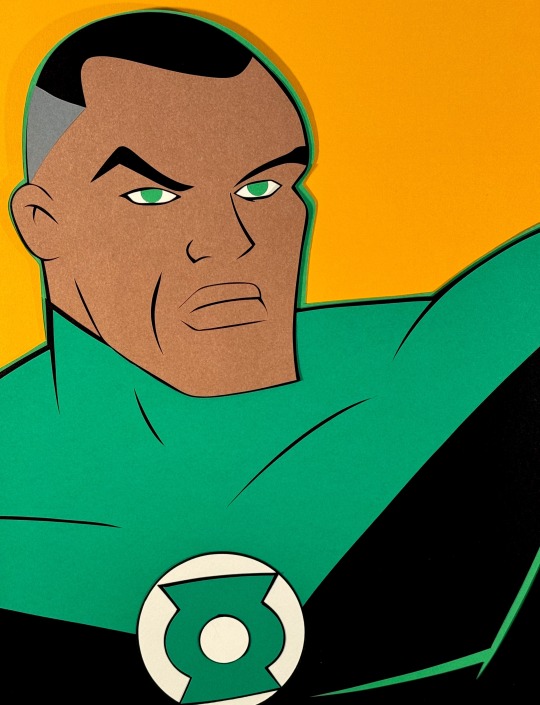
Heroes & Villains The DC Animated Universe - Paper Cut-Out Portraits and Profiles
The Green Lantern
John Stewart spent much of his youth in the care of his uncle and among his fondest memories was reading Justice Guild of America comics after school. He went on to serve in the United States Marine Corps where was a decorated soldier. Some time thereafter, Stewart was recruited by the Guardians of the Universe to join the Green Lantern Corps.
Green Lanterns were bestowed an energy ring fueled by one’s will that could create powerful, hard-light constructs. Stewart trained under the veteran Lantern, Katma Tui, learning to wield these awesome powers.
Eventually Stewart was assigned the Green Lantern guardian of Sector 2814, a region of space that included earth. This allowed him to return to his home planet and, shortly after his return, Stewart was telepathically contacted by the Martian, J’onn J’onzz. Hailing the call, Stewart joined the other heroes of earth in forming The Justice League so to fend off the invading forces of The Imperium.
Stewart continued on as a member of the League, growing especially close with his teammate, Hawkgirl. The two become romantically involved yet their affair was cut short when Hawkgirl was reveled to be a sleeper agent for a Thanagarian invasion force.
Hawkgirl would eventually betray her own people so to help save the earth. Although she and Stewart remained greatly attracted to one another, a trust had been broken and Stewart was reluctant to once more opening himself up to heartbreak. There is significant reason to believe the two ultimately worked through these issue, however, in that an adventure involving time-travel saw Stewart meeting his and Hawkgirl’s adult son, Warbird.
Voice actor extraordinaire, Phil LeMar, provided the voice for John Stewart with the Lantern first appearing in the second episode of the first season of Justice League, ‘Secret origins Part Two.’
#batman the animated series#Green Lantern#John Stewart#Phil LaMarr#Justice League#cut-out#paper art#DCAU
55 notes
·
View notes
Text
Think: Does This Relationship Need To Be Family Dynamic??
Okay so people more articulate than me have made posts about how imediately family-coding and aging down characters and saying "this is the child and this is the DAD" is infantilization, and it's really fucking blatant when you do it to women, and it's really fucking glaring when you do it to disabled women. MCYT has the idea that family dynamic The Superior Dynamic and couldn't possibly be objectionable, but like, it is often straight up disrespectful. We are talking about adults. They are adults. Stop assigning them baby.
I have bitten the bullet and gone GUYS I AM BEGGING YOU and mentioned that Daddy Kink is a thing that is popular out in the world and that immediately fixating on one character as a Daddy and one as a Little is actually the opposite of trying to come up with a non-shipping option. Like I am not judging here if that's what floats yoru boat, but at some point you are putting kink posts in the main tag, even if it's not overtly sexual, and some of these posts I am only calling deniably non-sexual because you HAVE to know what you're doing.
But even aside from all of these things, someone brought something up in GC today that I think is worth mentioning. QSMP is an international server drawing from a lot of different cultures, and a focus on a nuclear family dynamic, with everyone being father-son or brother-sister to each other, is a really Western concept of what relationships are important. Kinship ties beyond the nuclear family are an important thing in a lot of cultures, and extended family is a thing (cousins, anyone?), and community ties are a thing (it takes a village?), and people choosing to be part of a sect or group is a thing (they have the ordem right there!), and esprit de corps is a thing (you try and tell me codebreakers don't have a warriors bond) and insisting that everyone is in a strict nuclear family is just an incredibly 1950s america way to view things. It's a narrowing of the possibilities in the relationships. I think we can do better than enforcing our cultural views on what relationshps are at the top of the hiarchy just like, across the board.
So like, okay, maybe you don't want to ship characters. That's awesome. That's fine. Shipping is not mandatory. Instead of always saying "they're brother-sister" because you want to celebrate their relationship, maybe consider sometimes letting them just be epic friends, or close connections where you're the Tia of his children but there's no blood there, or a qpr knot where you have important bonds with people but no formal romantic ties, or take one of the relationship types mentioned above.
Like, I have my woes with family dynamic especially because of the first two points and because I find it tends to strip characters down to archetypes which I'm not into, but also I'm very aware that it can be done in such a way that it respects everyone involved and is great. I am not arguing that family dynamic is inherently problematic. But there are some significant pitfalls with using it, and I'm really asking you to consider the implications of what you're messaging before you start sticking people in a family format.
#qsmp#and I personally read some painful kidfic in a different fandom now so even me as an avowed kidfic enjoyer is like goddamn#when you reduce a character down to Baby with no character and Dad with no character#that's not good writing#Maybe celebrate the actual character a little more?#qsmpblr#discourse#fandom meta
196 notes
·
View notes
Text
Trudy Ring at The Advocate:
When marriage equality was but a dream, right-wingers alleged that somehow it would cheapen marriage. Twenty years after the first same-sex couples married in Massachusetts, a new study proclaims that’s not the case.
“For LGBT individuals and same-sex couples, their children, and the general U.S. population, the benefits of access to legal marriage for same-sex couples are unambiguously positive,” says the study by the RAND Corp., a nonprofit research organization.
The study’s authors reviewed the existing research on the effects of marriage equality — 96 studies — and conducted their own new analyses. They found that “when states legalized marriage for same-sex couples, the physical health of LGBT individuals in those states improved; state-level rates of syphilis, HIV, and AIDS fell significantly; same-sex households in those states experienced more-stable relationships, higher earnings, and higher rates of homeownership; and sexual orientation–motivated hate crimes and employment discrimination against LGBT individuals declined,” the study says.
“Children of same-sex couples benefited when their parents were granted access to legal marriage, and state-level adoption rates rose after marriage became legal for same-sex couples,” it continues.
There was “no evidence for a retreat from marriage,” the study notes. “New marriages increased by 1 percent to 2 percent among different-sex couples and about 10 percent overall,” it says, and there was “no consistent evidence” that cohabitation increased among unmarried different-sex couples or that divorces increased as a result of marriage equality.
“Some of those who opposed the granting of marriage rights to same-sex couples predicted that doing so would undermine the institution of marriage, resulting in fewer couples marrying, more couples divorcing, and an overall retreat from family formation,” study coauthor Benjamin R. Karney said in a RAND press release. “Overall, the fears of opponents of same-sex marriage simply have not come to pass.” Karney is a psychology professor at the University of California, Los Angeles, and adjunct researcher at RAND.
A new study from the RAND Corporation reveals that the benefits of marriage equality for same-sex couples are “unambiguously positive” to the economic and moral well-being of the USA.
39 notes
·
View notes
Text


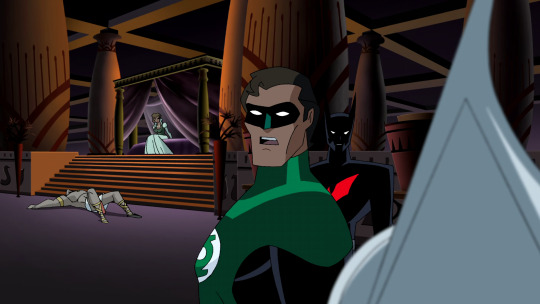









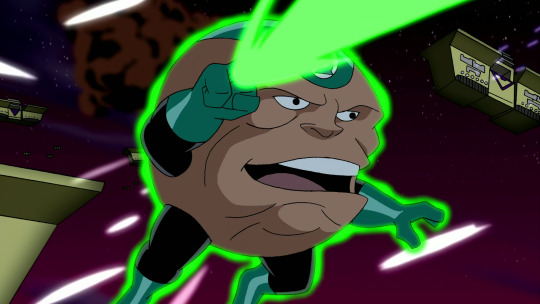
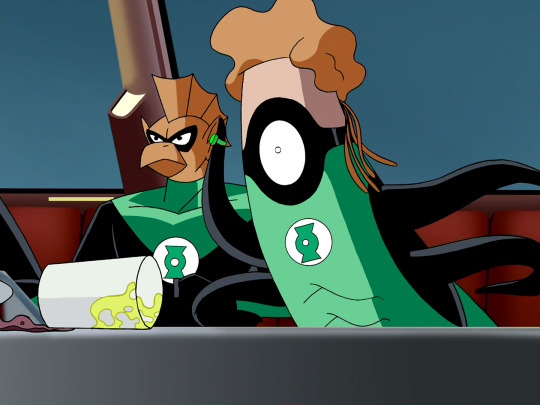






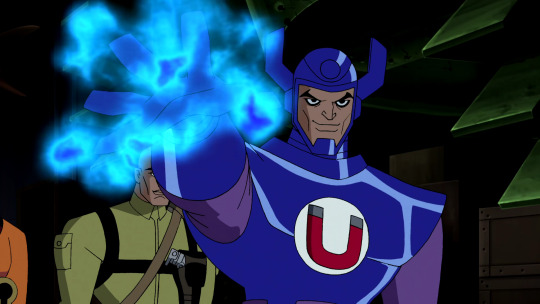



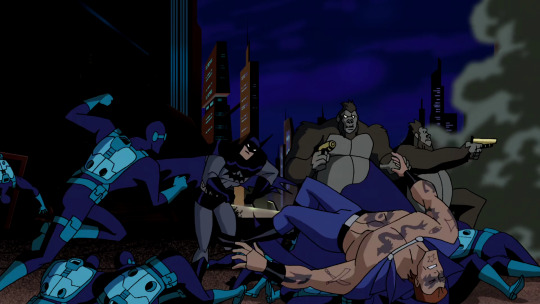
The Green Lantern corps. and Green Lantern villains as seen in the DC Animated Universe. In order:
The Guradians of the Universe - First appearance in Green Lantern v2 #1 (1960).
Abin Sur - First Appearance in Showcase #22 (1959).
Hal Jordan - First Appearance in Showcase #22 (1959).
John Stewart - First appearance in Green Lantern v2 #87 (1971).
Kyle Rayner - First appearance in Green Lantern v3 #48 (1994).
Jessica Cruz - First appearance in Justice League v2 #30 (2014).
Katma Tui - First appearance in Green Lanternv2 #30 (1964).
Kilowog - First appearance in Green Lantern Corps v1 #201 (1986).
Tomar Re - First appearance in Green Lantern v2 #6 (1961).
Arkkis Chummuck - First appearance in Green Lantern v2 #130 (1980).
Barreer Wot - First appearance in Green Lanternv4 #4 (2005).
Salakk - First appearance in Green Lantern v2 #149 (1982).
Galius Zed - First appearance in Tales of the Green Lantern Corps #2 (1981).
Larvox - First appearance in Green Lantern v2 #9 (1961).
Spol - First appearance in Green Lantern v2 #168 (1983).
Sinestro - First appearance in Green Lantern v2 #7 (1961).
Star Sapphire - First appearance in Showcase #22 (1959).
Vandal Savage - First appearance in Green Lantern v1 #10 (1943).
The Manhunters - First appearance in Justice League of America v1 #140 (1977).
Sonar - First appearance in Green Lantern v2 #14 (1962).
Dr. Polaris - First appearance in Green Lantern v2 #21 (1963).
Goldface - First appearance in Green Lantern v2 #38 (1965).
Evil Star - First appearance in Green Lantern v2 #37 (1965).
Sportsmaster - First appearance in All-American Comics #85 (1947).
The Tattooed Man - First appearance in Green Lantern v2 #23 (1963).
#dcau#dc animated universe#green lantern#hal jordan#kyle rayner#john stewart#jessica cruz#katma tui#sinestro#vandal savage#star sapphire#dc#dc comics#detective comics#sportsmaster#evil star#kilowog#the tattooed man#goldface#dr polaris#sonar#galius zed#bareer wot#larvox#spol#tomar re#salakk#arkkis chummuck#guardians of the universe#green lantern villains
42 notes
·
View notes
Note
Why don't you have any detailed posts about Steuben smh do better
AW FUCK NO MY REPUTATION!! HOW AM I SUPPOSED TO BE THE GAY HISTORY PERSON IF I DONT HAVE A DETAILED POST ABOUT STEUBEN!!!! i have to fix this...
Early Life
Friedrich Wilhelm August Heinrich Ferdinand Baron de Steuben was born on September 17, 1730 in Prussia. He joined the Prussian army at the age of 17, so he got a real early start.
Note: I've written his name here as "Baron de Steuben", as this name is from a French record, however he is typically referred to as "Baron von Steuben", as "von" is the translation of "de" from French to Prussian, and they both mean "of" in English. I just wanted to clarify that for the sake of my own linguistically correct sanity
Steuben began his service in the French and Indian War (or Seven Years War if you're a dirty European) as a second lieutenant, and was then wounded at the Battle of Prague, a Prussian victory. Then, he joined General Johann von Mayer's adjutant and principle staff officer in a special detached corps.
Then, he was promoted to first lieutenant and wounded AGAIN at the Battle of Kunersdorf, which was a Russian and Austrian victory. He was then transferred to general headquarters as a staff officer in the position of deputy quartermaster (this is important!!).
He was taken prisoner when Major General von Knoblock surrendered at Treptow, and was released after a year in 1762. He was promoted to captain and then became an aide-de-camp to Frederick the Great, which is as metal as it gets. He joined the King's class on the art of war, where he learned even more super cool military leadership skills.
Life Between Wars
Steuben met St. Germain in Hamburg (a notoriously great place to meet people). If you aren't in the know like I clearly am, St. Germain would eventually be the French Minister of War during the American Revolution. They'd meet again in France when Steuben was serving as Grand Marshall to the Prince of Hollenzollern-Hechingen, and if that sounds made up to you, it's because you don't even know him like I do.
Steuben continued looking for military work, but those European assholes (the British, French, and Austrians) rejected my man for no good reason (probably because he was gay or something). It was during his stay in France where he heard of the rowdy Americans across the pond.
St. Germain introduced Baron von Steuben to Silas fucking Deane and Benjamin "Slim Shady" Franklin, but they weren't able to promise Steuben anything but some regurgitated American propaganda, since, by this time, they were already getting yelled at by Congress and Washington for allowing too many incompetent Frenchmen into the Continental Army. They told him that the only way he could assist in the American fight for independence would be to go to America and present himself as a volunteer to Congress (like Lafayette ended up having to do).
This obviously pissed off Steuben since he was actually experienced trying to get a job, because its not fun being an overqualified, unemployed gay man in 18th century Europe. But still, he settled for being a volunteer, and set out for America, his passage being paid for by the French government.
WHAT THE FUCK IS A KILOMETERRRRRRR
Steuben traveled to America with his Italian greyhound, Azor, and his two assistants, Louis de Pontiere (ADC) and Pierre Ettienne Duponceau (military secretary). They arrived in New Hampshire on December 1, 1777. They were almost arrested upon arrival because Steuben had a blond moment and mistakenly dressed them in red uniforms instead of blue. They traveled through Boston to York, Pennyslvania, arriving on February 5, 1778.
In Steuben's letter of recommendation, Franklin mistranslated Steuben's rank to "His Excellency, Lieutenant General von Steuben, Apostle of Frederick the Great", which made him seem way more distinguished than he was. As a result, he was presented a much higher rank by Congress.
Steuben was ordered to report to Washington's headquarters at Valley Forge, where he arrived on February 23, 1778, and was described by a soldier as "a perfect personification of Mars."
Steuben's good first impression also had an effect on Washington, who appointed him temporary Inspector General, and it was in this position that he had his largest impact on American history, and changed the course of the war
Why Every Army Should Have Gay People, An Essay by Publius
Baron von Steuben began his transformation of the Continental Army by writing training drills, overriding the regional trainings of the state militias into a unified and universal regimen. There was a significant language barrier, however, as Steuben originally wrote the drills in French, which were then translated into English by Duponceau, John Laurens, and Alexander Hamilton. Then, they were given to the brigade inspectors, who made the copies which were then copied to be delivered to each officer. There was definitely a more efficient way to do this, but you know. It was also Valley Forge.
General Washington's Life Guard and some men from each state (totalling around 120 men) were used as a model to show the rest of the army how they were supposed to go through the drills. As they trained and demonstrated the drills, Steuben was writing new ones, only a few days ahead, which is a massive time crunch. This was done intentionally to make the drills as simple as he could, so the training of the army was dispersed in a rapid, orderly fashion. This man was a genius, I can't emphasize it enough.
The officers in the British army, which was the standard for Americans in many respects, would allow the sergeants to drill the men, but Steuben said fuck that, I'm gonna do it myself. This made many American officers uncomfortable because the men developed a bond with him because of how talented he was (and the fact that he was funny and used profanity in multiple languages), and along with the fact that Steuben's office seemingly had no limitations, this caused them to complain to the big boss, Washington. To make them feel better, Washington issued orders on June 15, 1778 to govern the Inspector General's office until further word from Congress.
The reformed Continental Army showed off their swag on May 6, 1778 when they celebrated the news of the Franco-American Alliance, which impressed soldiers, officers, and civilians. More happy news came when Steuben was given his commission from the Congress as Inspector General, with the rank of Major General.
It was at the Battle of Monmouth when the new training of the Continental Army was able to take what would have been a losing battle for the Americans to a technical draw. Steuben was actually almost killed/taken prisoner (depending on the mood of the British) during this battle because he was wearing so many metals of honor that he glimmered in the sunlight, and was spotted by the British. He was fine, though.
General von Steuben went to Philadelphia in the winter of 1778-79 to write his book of regulations, referred to as The Blue Book. Lieutenant Colonel Francois de Fleury, a volunteer, assisted in writing it. It was with the assistance of ~Benjamin Walker~ and Duponceau that the blue book was translated into English, which is why we know Walker as being important! And the fact that he and Steuben totally boned! Anyway, Captain Pierre Charles L'Enfant was illustrated it, and the book was used all the way until 1814.
After the war
General von Steuben rejoined the Continental Army in April of 1779 to serve through the end of the war. He was an instructor and supply officer for General Nathanael Greene's southern army from the beginning of the southern campaign until Yorktown. Steuben commanded one of three divisions in the Continentals at Yorktown. He assisted in demobilizing the army in 1783, and resigned his commission in 1784, which is actually the latest I've heard of a Continental General resigning his commission!
Steuben continuously petitioned Congress for financial compensation for mesothelioma (not really) and fuck ass Congress only gave him a part of what he was owed, which was pretty typical. But! New York, Pennsylvania, and Virginia all gave him land grants, which he sold portions off to have enough money to live. So, he retired from NYC to his land holdings to live the remainder of his life.
Oh, and fun fact, Steuben was present at one of the riots in New York that Alexander Hamilton tried to stop, and they both had bricks thrown at them. It might have been the Cadaver Riots, but I could be wrong since I didn't feel like double checking.
Steuben never married, and instead lived with Benjamin Walker for a long period of time. He died on his 16,000 acre farm tract in the Mohawk Valley of New York on November 28, 1794.
Homosexuality
The source I used for this does not mention his homosexuality at all, but I'm going to, because the last thing you'll ever see me do is pretend like gay people didn't exist or are "unprofessional" to talk about in history.
If you say that Alexander Hamilton was gay, you have to say Steuben was, and vice versa. Rumors of homosexuality followed Steuben from Europe all the way to America, and play a large role in why he relocated many times, and never seemed to have a permanent home until the end of his life. This was a form of unofficial exile that many queer people faced in times where their existence was illegal. As soon as your name was associated with possible homosexuality, you couldn't get comfortable anywhere.
But von Steuben wasn't brought down by this, and you've gotta respect that. He threw elaborate parties starting almost as soon as he arrived at the Continental Army. If you're new to the amrev community here, this is what we mean by "flaming shot/pantless parties", because they had shots of liquor that they would light on fire, and in order to get in, at least part of your breeches had to have been missing. While straight men did attend these parties, the subtext in discussions about them seem to imply that they were also a gathering place for queer men.
These parties continued, and some familiar faces were there, such as Duponceau, Walker Hamilton, Laurens, and, later on, Charles Adams. However, I'm not going to speculate on who was fucking who, though it has been largely accepted by historians that General von Steuben and Benjamin Walker were lovers, and I personally think there is substantial evidence to support this when you align their personal correspondence with the close proximity they maintained throughout their lives.
General von Steuben is a figure that is very important to many queer people as a conspicuous queer man in history who had an undeniable impact on the course of American history. Portrayals of Steuben in media typically disregard this, however more and more biographers are discussing his homosexuality and the significance it plays in queer history. So, I'll end this post by saying this: Steuben is just as significant in American history as he is in Queer history, and it is irresponsible to pretend like he isn't.
Source:
National Park Service- Valley Forge
British Battles.com- Battle of Kunersdorf
George Washington's Indispensable Men by Arthur S. Lefkowitz
John Laurens and the American Revolution by Gregory D. Massey
Alexander Hamilton by Ron Chernow
Anyway, thank you for giving me an excuse to talk about Steuben lol. I didn't previously know much about his life before the American Revolution, so I was very happy to learn. I actually bought a biography about him not long ago, The Drillmaster of Valley Forge: The Baron de Steuben and the Making of the American Army by Paul Lockhart, but I haven't read it yet. If anyone has, pls let me know if it's good or not. After Massey and Chernow, I'm practically on my hands and knees begging for a male author to treat queer history seriously. Anyway, thank you for the ask! I'm going to go watch the george washington mini series for steuben content
#history#amrev#american history#asks#american revolution#18th century#1700s#alexander hamilton#john laurens#baron von steuben#general von steuben#steuben#fredrich wilhelm august heinrich ferdinand baron de steuben#queer history#live laugh gay people#french history#prussian history#french and indian war#seven years war
22 notes
·
View notes